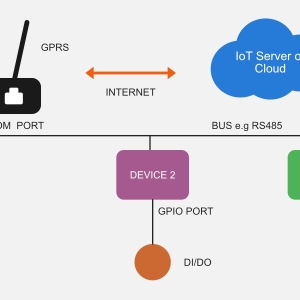The latest report by IMARC Group, titled “Nanosatellite and Microsatellite Market: Global Industry Trends, Share, Size, Growth, Opportunity and Forecast 2023-2028“, The global nanosatellite and microsatellite market size reached US$ 2.5 Billion in 2022. Looking forward, IMARC Group expects the market to reach US$ 7.2 Billion by 2028, exhibiting a growth rate (CAGR) of 19.7% during 2023-2028.
Factors Affecting the Growth of Nanosatellite and Microsatellite Industry:
- Significant Technological Advancements:
Technological advancements in miniaturization and component integration have played a pivotal role in driving the nanosatellite and microsatellite market forward. Over the years, there has been a remarkable reduction in the size and weight of satellite components, enabling the development of smaller satellites without compromising functionality or performance. This miniaturization trend has been facilitated by advancements in materials science, electronics, and propulsion systems, allowing satellite manufacturers to pack more capabilities into smaller form factors. One key technological advancement driving this market is the development of small, high-performance sensors and processors. These advancements have enabled nanosatellites and microsatellites to carry out sophisticated missions, including Earth observation, remote sensing, and communications, at a fraction of the cost of traditional larger satellites. Additionally, improvements in propulsion systems, such as electric propulsion, have enhanced the maneuverability and lifespan of these small satellites, expanding their utility in various orbital applications.
- Cost Efficiency and Accessibility:
Another significant factor driving the growth of the nanosatellite and microsatellite market is cost efficiency and accessibility. Traditional large satellites are typically associated with high development, launch, and operational costs, limiting access to space for many organizations, especially small and medium-sized enterprises (SMEs), academic institutions, and emerging spacefaring nations. In contrast, nanosatellites and microsatellites offer a more cost-effective and accessible alternative, due to their smaller size, standardized components, and shared launch opportunities. The reduced size and weight of nanosatellites and microsatellites translate to lower launch costs, as multiple small satellites can be launched together as secondary payloads on larger launch vehicles or deployed from dedicated small satellite launchers. This shared launch approach, coupled with advancements in ride-sharing and launch integration services, has significantly lowered the barriers to entry for satellite developers, enabling a more diverse range of organizations to participate in space-based activities.
- Expanding Applications and Market Demand:
The third driving factor behind the growth of the nanosatellite and microsatellite market is the expanding range of applications and market demand for small satellite solutions. Historically, satellites were primarily used for telecommunications, navigation, and Earth observation by government agencies and large corporations. However, the capabilities of nanosatellites and microsatellites have broadened their utility across various industries, leading to a rise in demand for small satellite-based solutions. One of the key application areas driving market growth is Earth observation and remote sensing. Nanosatellites and microsatellites equipped with high-resolution imaging payloads enable frequent and cost-effective monitoring of the surface of the Earth, facilitating applications such as environmental monitoring, agriculture management, disaster response, and urban planning. These small satellites provide timely and actionable data to governments, businesses, and non-profit organizations, driving efficiency and informed decision-making across various sectors.
Competitive Landscape with Key Player:
- AAC Clyde Space
- Axelspace Corporation
- Berlin Space Technologies
- GomSpace
- ISISPACE Group
- L3harris Technologies Inc.
- Lockheed Martin Corporation
- Planet Labs Tb Inc.
- Spacequest Ltd.
- Spire Inc.
- Surrey Satellite Technology
- Tyvak Nano-Satellite Systems Inc.
For an in-depth analysis, you can refer sample copy of the report: https://www.imarcgroup.com/nanosatellite-microsatellite-market/requestsample
Report Segmentation:
The report has segmented the market into the following categories:
Breakup by Satellite Mass:
- Nanosatellite (1kg to 10kg)
- Microsatellite (10kg to 100kg)
Nanosatellite (1kg to 10kg) dominates the market due to its versatility, cost-effectiveness, and ability to address a wide range of applications across industries while still offering significant payload capabilities.
Breakup by Component:
- Hardware
- Software and Data Processing
- Space Services
- Launch Services
Hardware holds maximum number of shares due to the essential nature of physical components such as satellite structures, propulsion systems, communication subsystems, and payload instruments, which are fundamental for the operation and functionality of nanosatellites and microsatellites.
Breakup by Application:
- Communication
- Earth Observation and Remote Sensing
- Scientific Research
- Biological Experiments
- Technology Demonstration and Verification
- Academic Training
- Mapping and Navigation
- Reconnaissance
- Others
Earth observation and remote sensing represent the largest segment due to its widespread utility in areas such as environmental monitoring, agriculture management, disaster response, and urban planning, providing timely and valuable data for informed decision-making across various sectors.
Breakup by End-Use Sector:
- Government
- Civil
- Commercial
- Defense
- Energy and Infrastructure
- Others
Commercial dominates the market due to the increasing demand for commercial satellite services such as telecommunications, Earth observation, and remote sensing across various industries worldwide.
Market Breakup by Region:
- North America (United States, Canada)
- Asia Pacific (China, Japan, India, South Korea, Australia, Indonesia, Others)
- Europe (Germany, France, United Kingdom, Italy, Spain, Russia, Others)
- Latin America (Brazil, Mexico, Others)
- Middle East and Africa
North America’s dominance in the nanosatellite and microsatellite market is attributed to its robust infrastructure, significant investments in space technology, and the presence of leading satellite manufacturers and service providers.
Global Nanosatellite and Microsatellite Market Trends:
Government initiatives and regulatory support play a crucial role in driving the growth of the nanosatellite and microsatellite market. Many governments around the world are actively promoting the development and deployment of small satellites through funding programs, grants, and regulatory reforms aimed at facilitating easier access to space. These initiatives encourage collaboration between public and private sectors, stimulate innovation, and accelerate the adoption of small satellite technologies across various applications. Additionally, the commercialization of space and the emergence of new business models are significant drivers shaping the nanosatellite and microsatellite market. Traditionally dominated by government agencies and large aerospace corporations, the space industry is experiencing a paradigm shift toward commercialization, with private companies playing an increasingly prominent role in space exploration, satellite manufacturing, and satellite-based services.
Note: If you need specific information that is not currently within the scope of the report, we will provide it to you as a part of the customization.
About Us
IMARC Group is a leading market research company that offers management strategy and market research worldwide. We partner with clients in all sectors and regions to identify their highest-value opportunities, address their most critical challenges, and transform their businesses.
IMARC’s information products include major market, scientific, economic and technological developments for business leaders in pharmaceutical, industrial, and high technology organizations. Market forecasts and industry analysis for biotechnology, advanced materials, pharmaceuticals, food and beverage, travel and tourism, nanotechnology and novel processing methods are at the top of the company’s expertise.
Our offerings include comprehensive market intelligence in the form of research reports, production cost reports, feasibility studies, and consulting services. Our team, which includes experienced researchers and analysts from various industries, is dedicated to providing high-quality data and insights to our clientele, ranging from small and medium businesses to Fortune 1000 corporations.
Contact US
IMARC Group
134 N 4th St. Brooklyn, NY 11249, USA
Email: sales@imarcgroup.com
Tel NoD) +91 120 433 0800
United States: +1-631-791-1145 | United Kingdom: +44-753-713-2163






